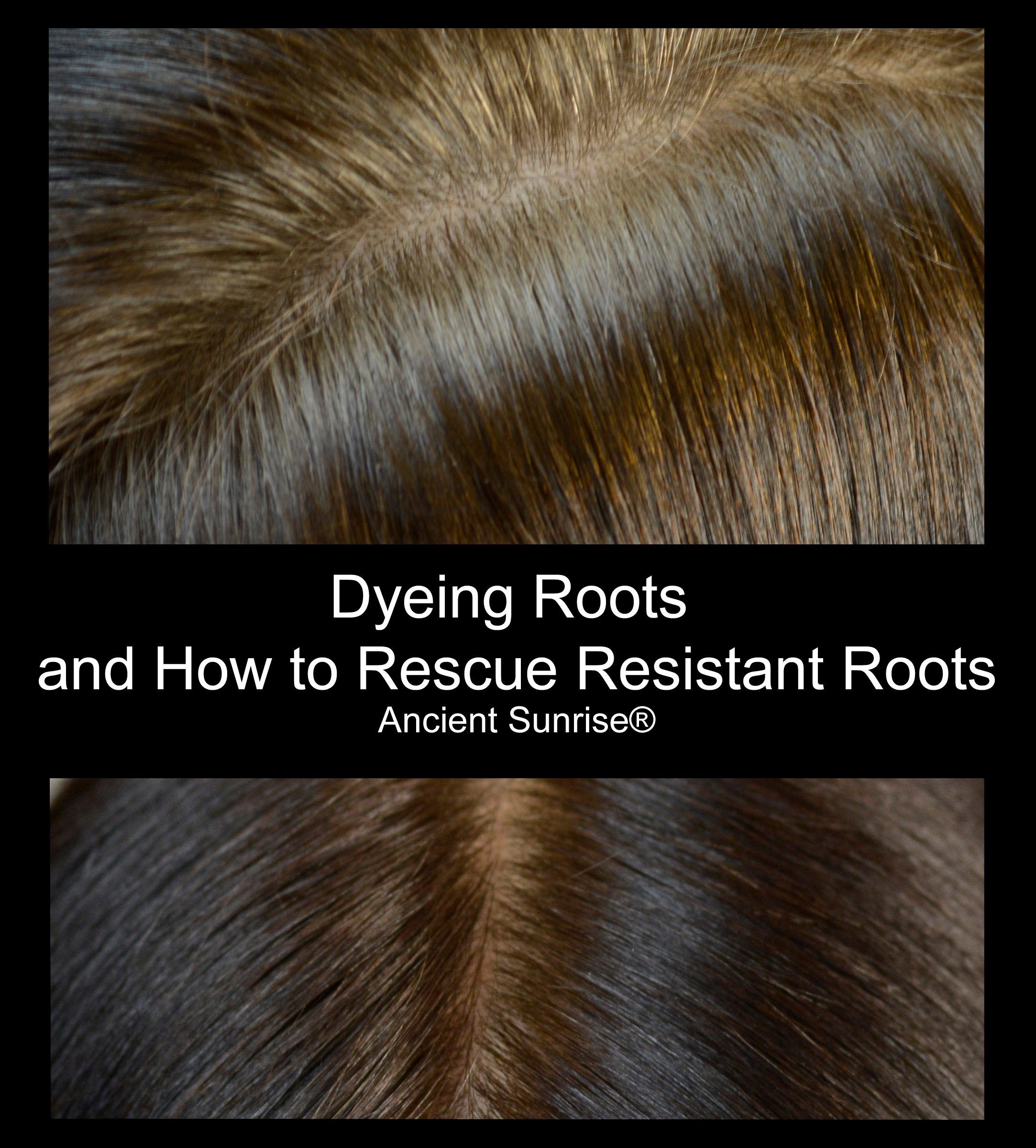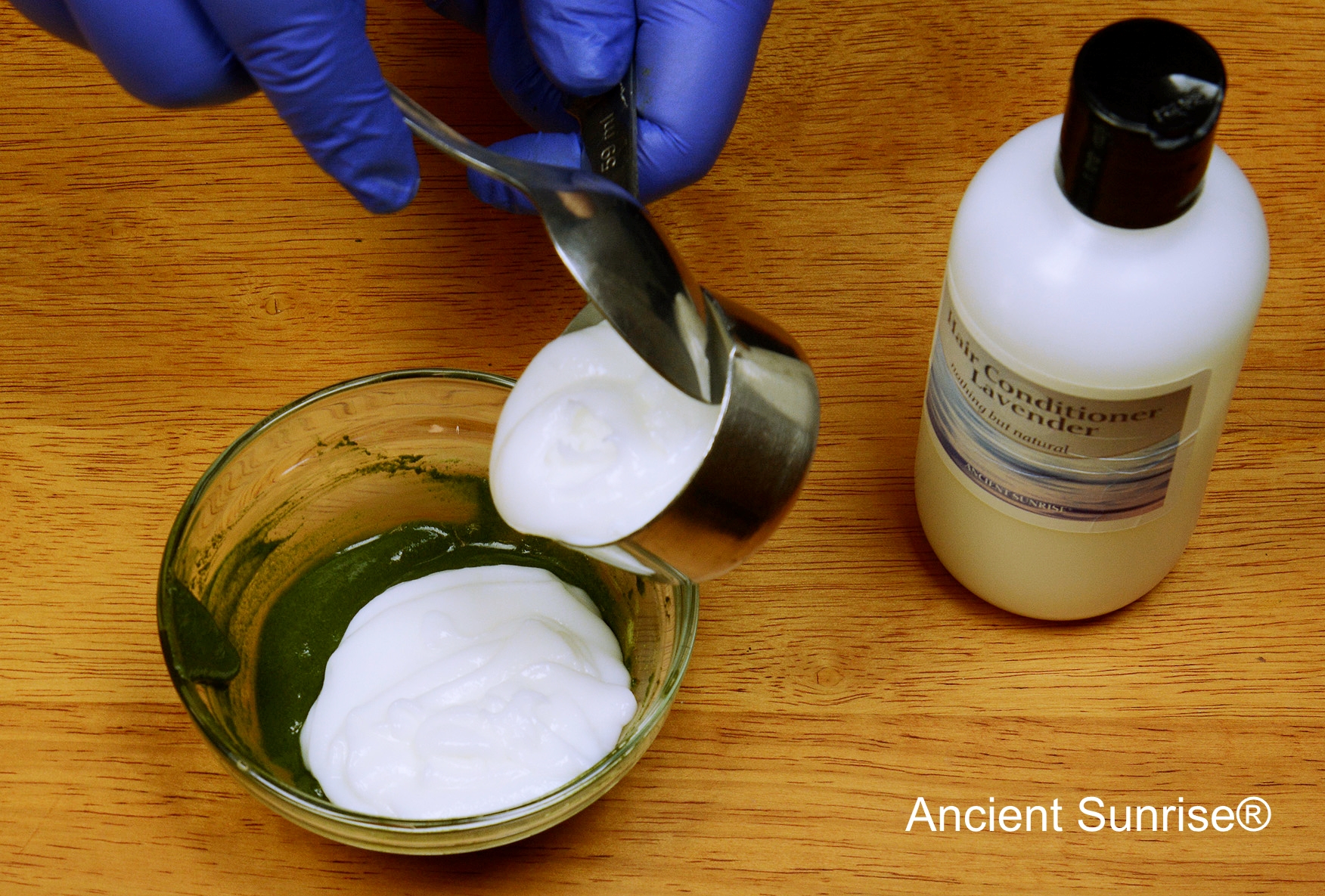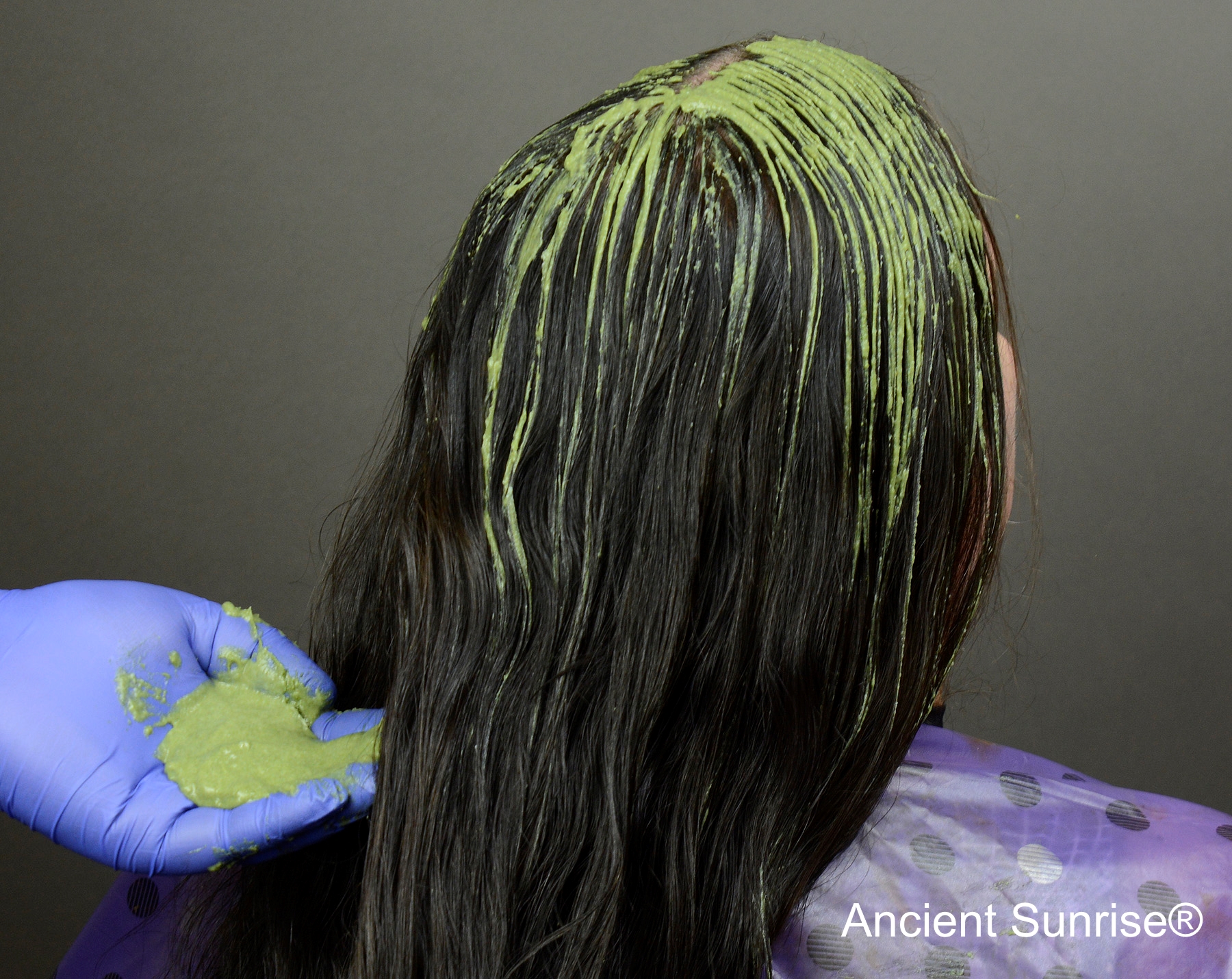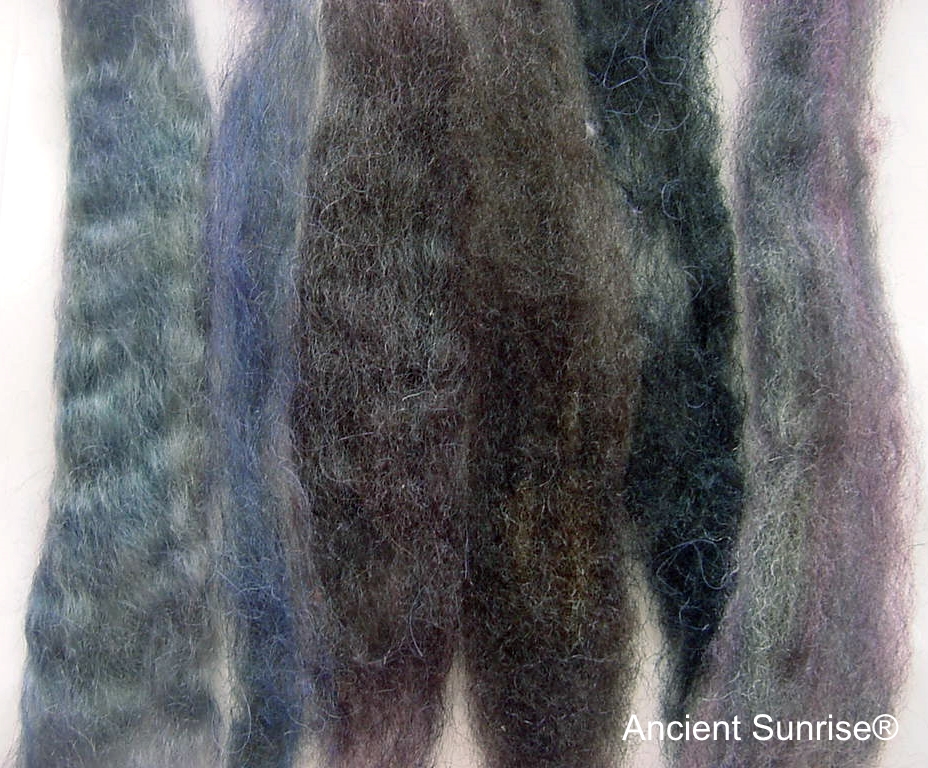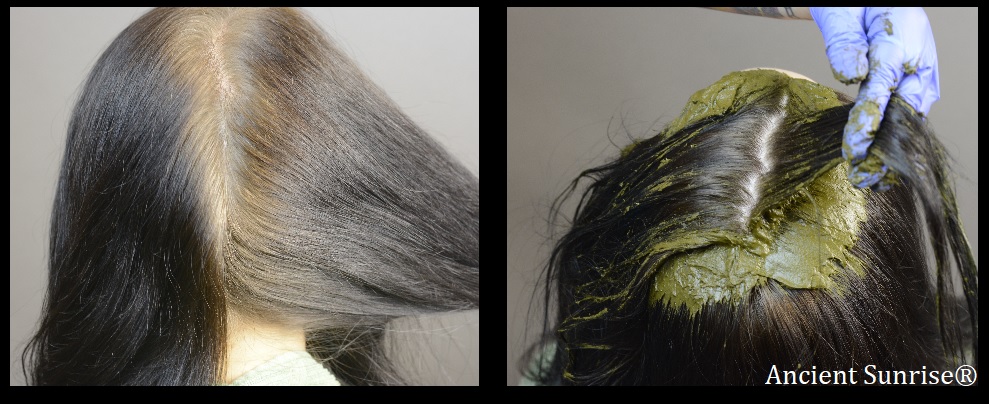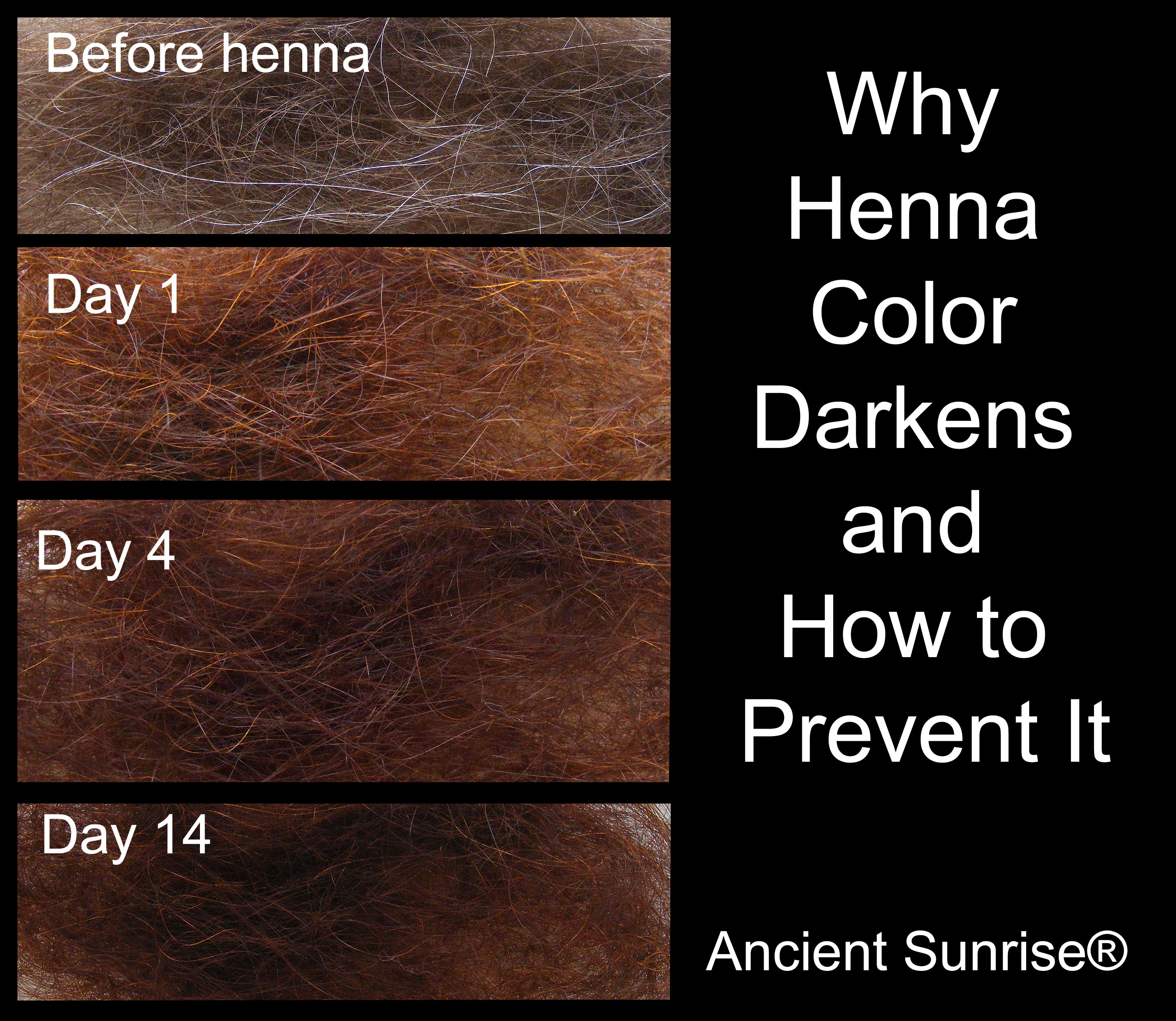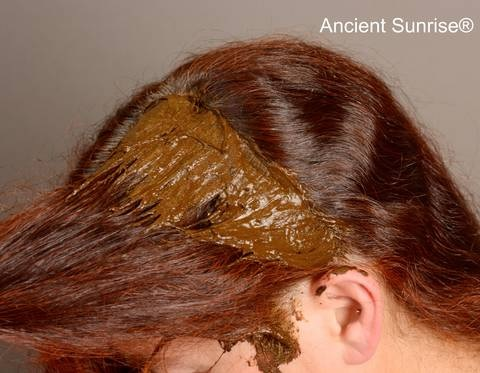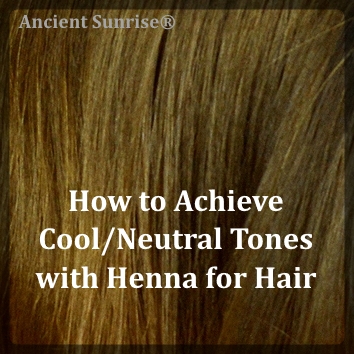
Henna is known for its ability to dye hair rich, vibrant shades that bring forth thoughts of copper pennies, autumn leaves, and crackling fires. However, not everyone wants to be a red-head. Those familiar with using natural plants dyes might know that combinations of henna and indigo will result in brown-reds and medium to deep brunettes. A two-step process will leave hair raven black. What a lot of people do not seem to know is that neutral and cool tones are possible with the right techniques.
A common concern voiced by new henna users is that even a henna/indigo mixture will result in a brunette shade that is too warm for their liking. Many prefer neutral to cool tones in their hair, as they believe it better suits their complexions. While somewhat tricky, neutral and cool toned hair colors are possible using the right combination of henna and indigo (and sometimes cassia), and the right fruit acid. Because each person’s hair varies on undertone, porosity, and dye-resistance, getting the perfect color may take some patience and strand-testing. Remember that our henna experts are available to talk you through the process, and help you troubleshoot if needed, until you achieve your perfect color.
A Quick Return to the Basics
If you have clicked around on this blog, in the Ancient Sunrise® Henna for Hair Free E-book, or in another of our many resources, you should be familiar with the processes of mixing and dye-releasing henna, cassia, and indigo. If not, feel free to pause here and glance over Henna for Hair 101: The Bare Essentials, and Henna for Hair 101: Choosing Your Mix.
Ratios for henna and indigo are easy to remember: Equal parts henna and indigo will result in a medium brunette. More henna will add more warm tones, and more indigo will darken the shade. Cassia makes henna and henna/indigo mixtures lighter, but does not lighten hair.
It may be logical to believe that the more indigo you add into the mix, the cooler the resulting shade will be. Yes… and no. Indigo on its own dyes hair a blue tone, and it neutralizes warm tones created by henna. However, adding more indigo to a medium brunette mix will create a dark brunette mix. That dark brunette result may still be a warm dark brunette due to henna’s red dye.
While using indigo is one part of achieving a neutral or cool hair color, the correct choice in fruit acid is equally important. Fruit acids can bring out bright, warm tones, or mute them. With an effective indigo component and the right fruit acid, you’ll be on your way to lovely neutral brunettes. If you’d like a lighter neutral color, such as those in the blonde family, a little extra tinkering will get you there.
Indigo
It is not uncommon for henna/indigo users to report that their roots are coming out too red, or hair appears redder over time. This is due to indigo’s higher tendency toward fading. Achieving an effective bind of indoxyl molecules to the hair will be particularly necessary for those who wish to avoid warm tones. This means understanding the chemistry behind the indoxyl/indigo molecules, and the most effective ways to ensure a permanent stain.
Indigo plant powder contains an indigo precursor molecule, indoxyl, which is immediately released when the powder is mixed with water. Indoxyl is a tricky, picky molecule. As soon as the indigo mixed into a paste, indoxyls look to bind with oxygen to transform into a stable indigo molecule. The indigo molecule will not bind to the hair. This process is similar to henna demise, but occurs much more rapidly.
It is important to mix indigo paste only right when you are ready to dye your hair, and work quickly once the paste is mixed. Preventing unnecessary exposure to air will keep the molecules in their indoxyl state longer, allowing them to bind to keratin rather than oxygen.

In the presence of oxygen, two indoxyl molecules bind with each other to form indigo, which is a stable molecule.
Once the dye is in the hair, the extent to which it binds to and stays in the hair is dependent on several factors including hair texture and the presence of dirt, oils, and mineral build-up. It is not uncommon to see a henna/indigo mixture begin as a nice, neutral brunette, and become more auburn as the indigo fades and the henna stays put. If you desire a cool or neutral shade, this is something you’d obviously like to avoid. Doing the following will ensure a successful and permanent indigo stain.
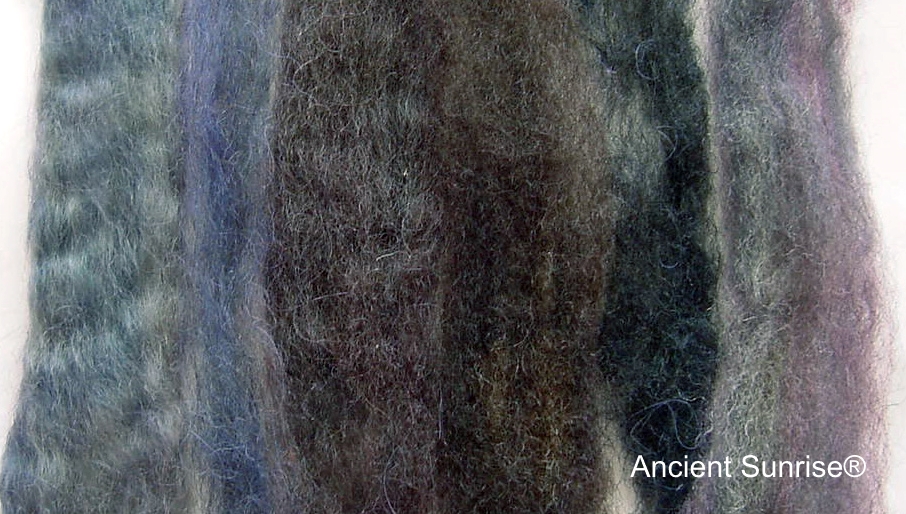
Black, gray, and white wool is dyed with indigo only, revealing shades of blue.
Clarify, clarify, clarify
Indigo binds best to squeaky clean hair. This means no oils, conditioners, hair products, dirt, grime, mineral build-up, leftover snacks, or fuzzy animal friends. At the very least, wash your hair thoroughly with a shampoo specially made for clarifying buildup. Clarifying shampoos are easily found at salons and beauty supply stores, and they are showing up more and more frequently now at regular drugstores as well.
Do yourself one better and start with Ancient Sunrise® Rainwash Mineral Treatment, and then follow that up with a good rinse with a clarifying shampoo. Wash your hair immediately before applying your henna/indigo mixture, and remember to skip the conditioner. Anything left on the hair creates an obstacle for the indoxyl molecules and increases the chances of a weak bond that will fade over time.
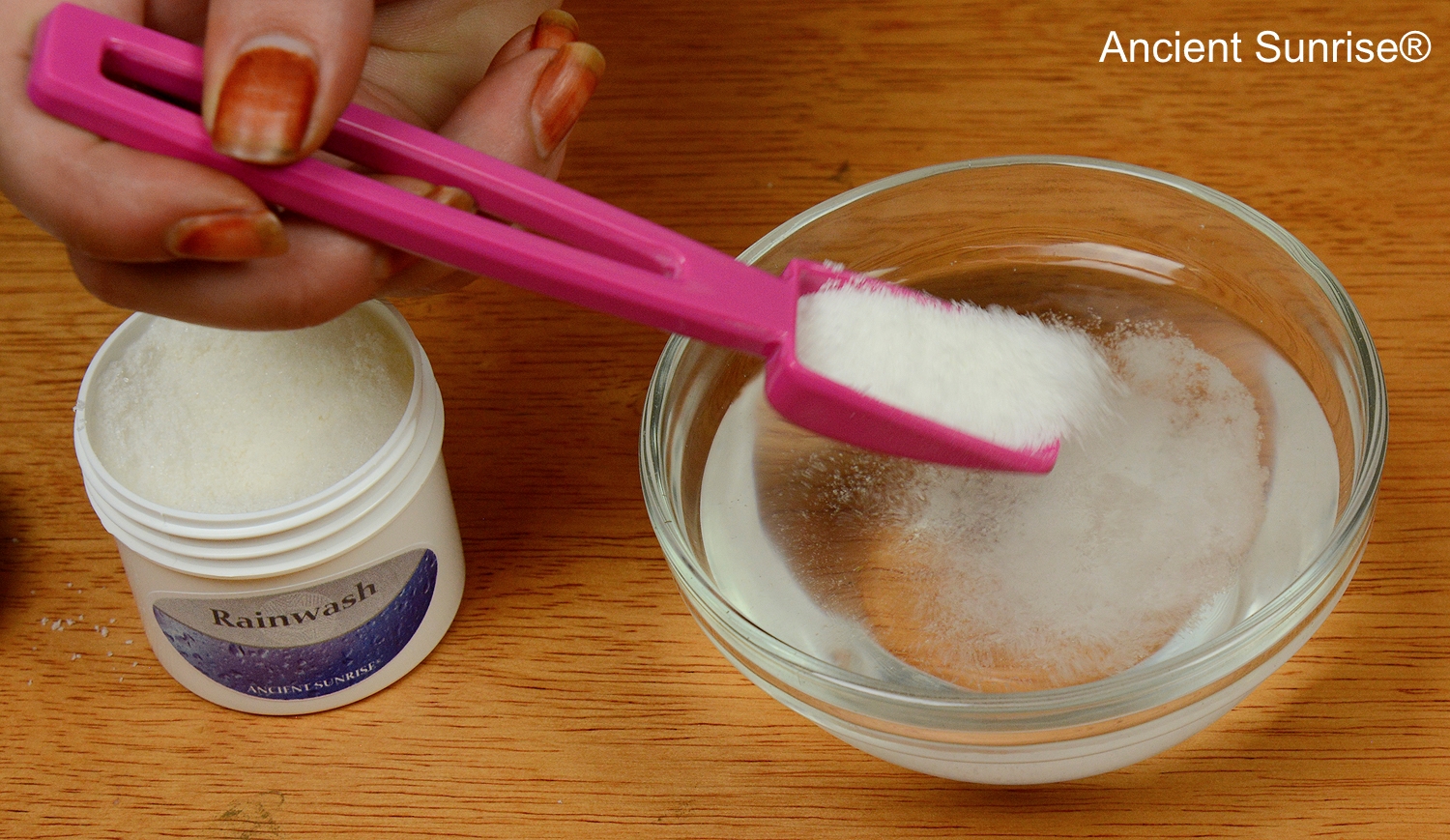
Ancient Sunrise® Rainwash is a natural treatment that removes mineral buildup. Mix 1 teaspoon of product with 2oz. distilled water to create a gel, and apply it to the hair, leaving it in for at least 15 minutes.
For those who have extra-resistant hair, we will recommend scrubbing the scalp and roots with a few drops of liquid dish soap. Dish soap is a very strong detergent and will wipe out any residual oils which might get in the way of a good indigo stain. Keep in mind that in doing so, the soap will dry out the scalp, but this dryness is temporary and can be fixed with a conditioning treatment after washing out your dye mixture. For the purpose of a good indigo stain, hair that is dry (absent of oils) and slightly roughed-up is the best. The hair closest to the roots is smoother and less porous, making it more resistant to dye.
Salt helps
For extra staying power, add 1 teaspoon of regular table salt (not sea salt or Himalayan; they contain minerals!) per every 100g indigo powder. The salt helps to strengthen the indigo’s bond to the hair by temporarily altering the surface texture of the hair strand, allowing a better stain.
Heat helps, too
After applying the henna/indigo paste and wrapping your hair with plastic, gently heat your hair. You can use a dryer bonnet, sit outside on a warm day, place a heated blanket or heating pad over your head, or aim a hair dryer at your head for a few minutes at a time. Heat opens the hair’s cuticles, allowing more dye to migrate into the shaft. Heat will also cut down on processing time. Under consistent warm temperatures (100F-140F), you can cut processing time roughly in half.
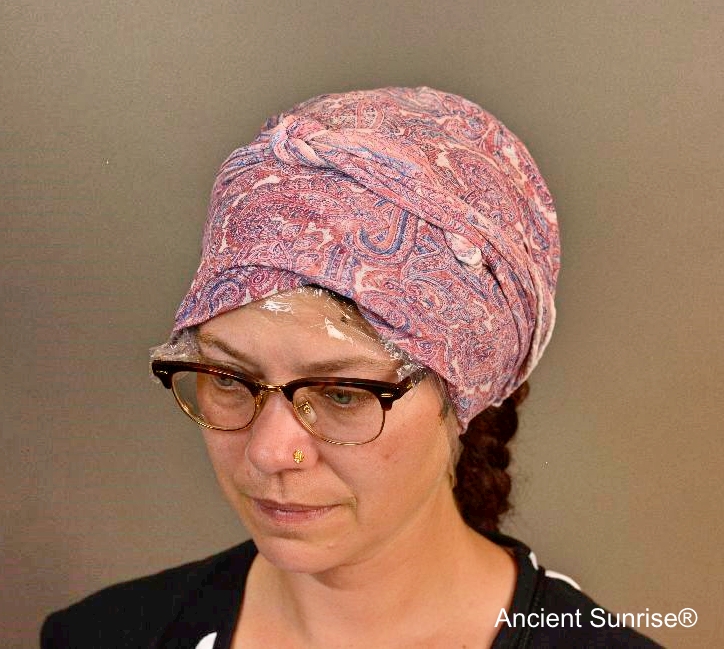
If you don’t have access to a dryer hood or heating pad, wrap your hair and sit somewhere warm. The towel or scarf will keep your body heat in the paste, and prevent dripping.
Fruit Acids
Henna should always be dye-released with an acidic liquid, or an acidic fruit powder plus distilled water. Some acids bring out and maintain henna’s bright, warm tones. Others mute the tones. You will want to use the latter.
The two best fruit acids for neutral and cool results are Ancient Sunrise® Nightfall Rose and Ancient Sunrise® Amla.
Ancient Sunrise® Nightfall Rose is derived from the purple aronia fruit, and is very high in anthocyanins. Anthocyanins are what cause blueberries to be blue. When used to dye-release henna, Ancient Sunrise® Nightfall Rose adds subtle ash tones to the henna, cooling the overall shade. Once the henna is dye-released and mixed with indigo, the resulting color is neutral without being overly dark.

The purple aronia fruit, similar to blueberries, is high is anthocyanins which add a subtle blue tone to henna mixes.
Ancient Sunrise®Amla powder is another solid choice. Amla mutes warm tones by pushing the henna dye molecules toward brown during the dye release process. Amla on its own is not a dye, and will not color hair. It simply tweaks the color the lawsone precursor molecules during dye-release. As an added bonus, Amla helps indigo bind more effectively by temporarily snapping hydrogen bonds in the keratin of the hair, allowing the indigo dye to migrate in more effectively. The result is a cooler and often deeper brunette without warm undertones.
Ancient Sunrise® offers pre-made Henna for Hair kits in Cool Brunette and Cool Dark Brunette, which both contain amla as the fruit acid. If you are looking for brown hair without red, a good place to start would be to order either or both sample kits to test, and then go from there. You may find that one works perfectly for you, or you can adjust the formula to create your own custom mix.
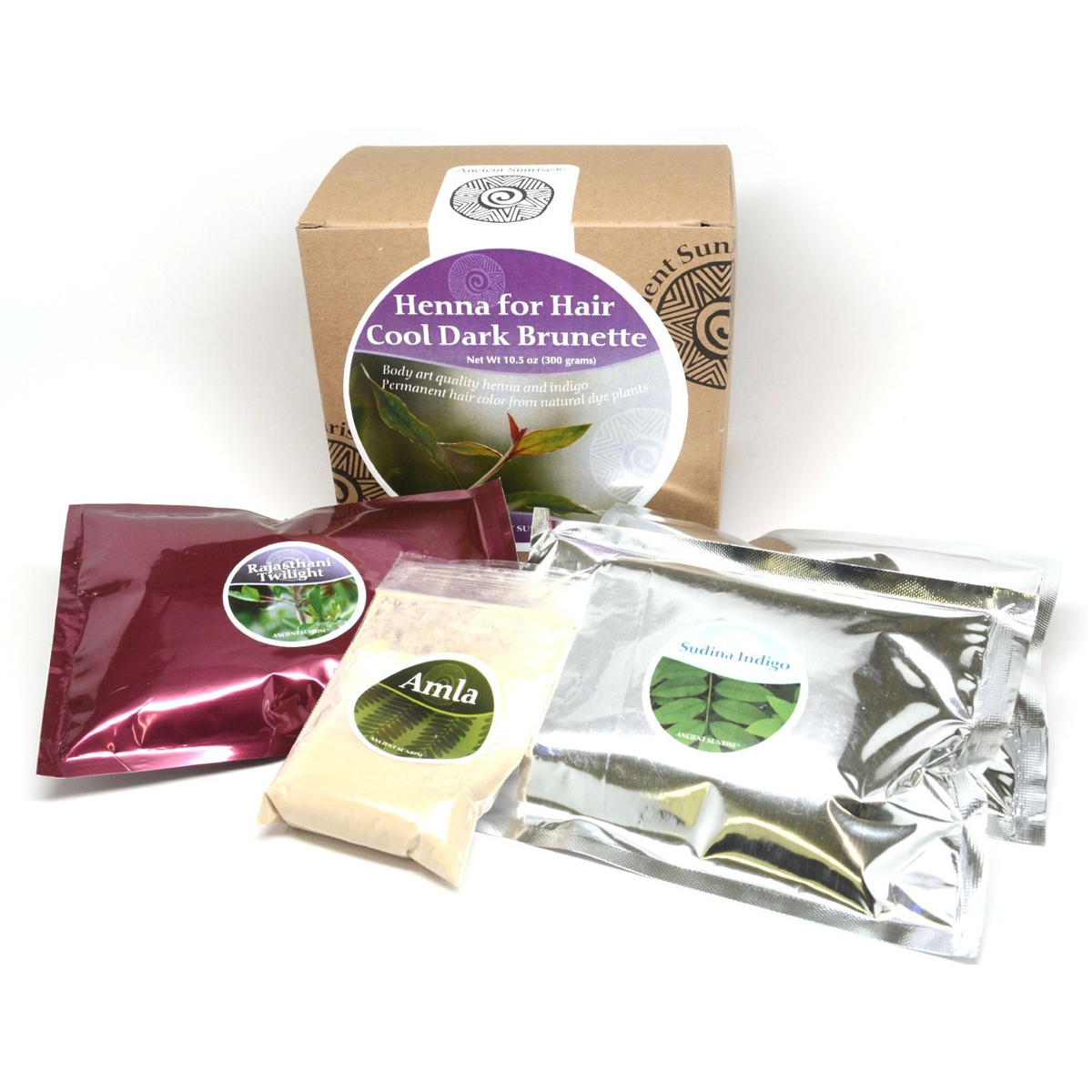
Getting Fancy: Cassia, Henna, and Indigo Mixes
Mixing cassia, henna, and indigo allows for a wide range of lighter neutral shades, from ‘hint of dirty blonde” to “coffee with cream brunette.” Cassia acts to “dilute” the henna and indigo in such a way that the hue remains stable, but the shade is made lighter.
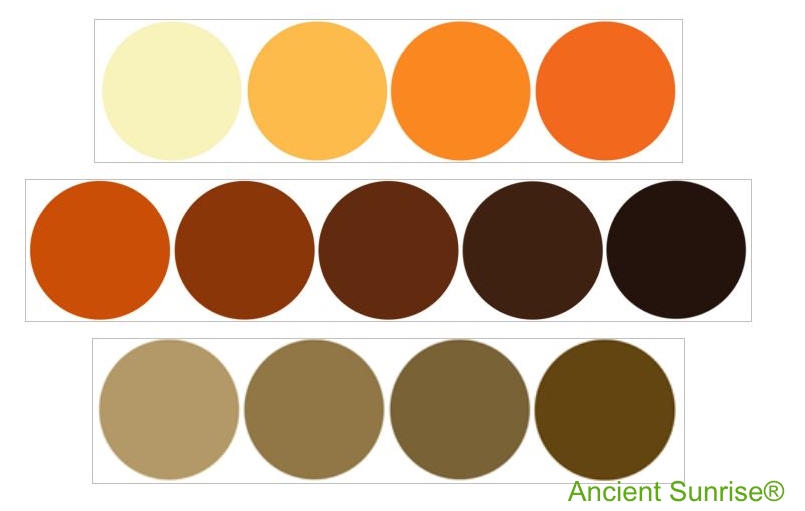
This will be explored in more depth in a future article. If your hair is lighter or gray, equal parts henna and indigo result in a medium brunette. Equal parts henna, cassia, and indigo will result in a light-medium brunette. Keep adding cassia until you have 80% cassia, 10% henna, and 10% indigo, and you have a mix which dyes light hair a deep blonde.
Some customers find that their hair still shows too much warmth with the Chai kit, so they decrease the henna. Because the mix contains mostly cassia, they can adjust the henna/indigo ratio without going darker. Remember that cassia is a light, translucent golden dye, and will not lighten hair.
Toning Warm Tones
If your mix comes out too warm, there are ways to calm it down. We generally recommend waiting a week after your first application because it can cool down on its own. If you’ve “been there, done that” and your hair generally is warm, it is okay to tone after your initial application.
To give your hair more of a cool tone, you will need cassia and indigo. The amount of each and the time will vary. Testing is crucial so that you don’t over do it and so that you aren’t wasting a lot of product. For more information on toning, visit Toning Henna – Part 1 and Toning Henna – Part 2.
Your Hair’s Natural Color
Henna, indigo, and cassia all stain the hair’s outer layers of keratin. This does not affect the hair’s natural melanin, which is one reason that the same mix will appear somewhat different on two different heads of hair. Genetics determine the amount of eumelanin and pheomelanin within the hair, which causes hair to be blonde, brunette, or red, and to have warm or cool undertones. Eumelanin causes hair to have ash tones, or to be dark. Black hair has the highest amount of eumalanin. Pheomelanin give hair red tones. Natural redheads have the highest levels of pheomelanin. Most hair colors have some ratio of both.
It will be more difficult to achieve a neutral or cool hair color with a very warm starting hair color. A natural redhead may have to play around with plant powder ratios and acids much more than someone who is starting with a medium ash blond, in order to achieve a cool brunette.
How to Begin
The best plan is to start with test samples, and determine which one provided the closest color to your goal. From there, you can adjust plant dye ratios, and try both Ancient Sunrise® Nightfall Rose and Amla fruit powders. If your test sample came out too dark, increase cassia or decrease indigo. If it was too light, do the opposite. Remember that increasing the amount of fruit acid will not neutralize more red; doing so will only make the mix too acidic. Don’t hesitate to consult with a Customer Service Representative to fine-tune your mix. Remember to start lighter when in doubt. It is easier to re-apply with a darker mix than it is to lighten.

The Ancient Sunrise® Henna for Hair Facebook group is another great source for custom mixes and before/after photos from fellow customers. Use this as a resource to ask for tips, compare results and gauge your expected outcome. It’s also a great way to stay updated on new blog articles and special promotions!
Final Notes on Neutral and Cool Tones
Remember that your results will take about a week to oxidize into their final color. Hair can appear brighter upon first rinsing out the mix. Do not be alarmed if you see red or copper tones in your hair. Be patient, and wait that week before reapplying. During the oxidation period, the warm tones will diminish. If you are impatient, you may use heat to speed up the oxidation process. Heat will darken hennaed hair rapidly, and permanently. Keep this in consideration before beginning.
For all other troubleshooting or questions, contact the Ancient Sunrise® Customer Service Team via email, online chat, or phone call.
Author: Rebecca Chou August 2017
Edited: Maria Moore August 2022

